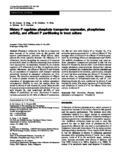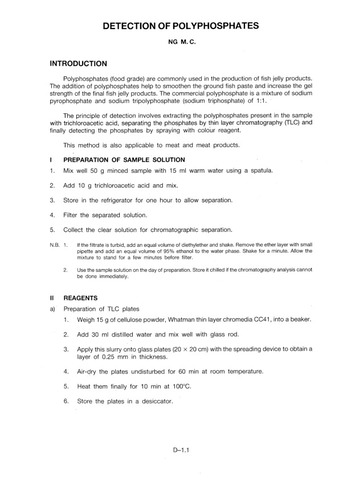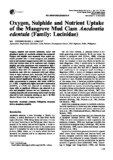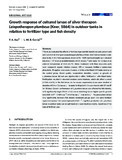Dietary P regulates phosphate transporter expression, phosphatase activity, and effluent P partitioning in trout culture

View/
Request this document
Date
2003Page views
231Metadata
Show full item recordCited times in Scopus
Share
Abstract
Phosphate utilization by fish is an important issue because of its critical roles in fish growth and aquatic environmental pollution. High dietary phosphorus (P) levels typically decrease the efficiency of P utilization, thereby increasing the amount of P excreted as metabolic waste in effluents emanating from rainbow trout aquaculture. In mammals, vitamin D3 is a known regulator of P utilization but in fish, its regulatory role is unclear. Moreover, the effects of dietary P and vitamin D3 on expression of enzymatic and transport systems potentially involved in phosphate utilization are little known. We therefore monitored production of effluent P, levels of plasma vitamin D3 metabolites, as well as expression of phosphatases and the sodium phosphate cotransporter (NaPi2) in trout fed semipu diets that varied in dietary P and vitamin D3 levels. Mean soluble P concentrations varied markedly with dietary P but not with vitamin D3, and constituted 40–70% of total effluent P production by trout. Particulate P concentrations accounted for 25–50% of effluent P production, but did not vary with dietary P or vitamin D3. P in settleable wastes accounted for <10% of effluent P. The stronger effect of dietary P on effluent P levels is paralleled by its striking effects on phosphatases and NaPi2. The mRNA abundance of the intestinal and renal sodium phosphate transporters increased in fish fed low dietary P; vitamin D3 had no effect. Low-P diets reduced plasma phosphate concentrations. Intracellular phytase activity increased but brushborder alkaline phosphatase activity decreased in the intestine, pyloric caeca, and gills of trout fed diets containing low dietary P. Vitamin D3 had no effect on enzyme activities. Moreover, plasma concentrations of 25-hydroxyvitamin D3 and of 1,25-dihydroxyvitamin D3 were unaffected by dietary P and vitamin D3 levels. The major regulator of P metabolism, and ultimately of levels of P in the effluent from trout culture, is dietary P.
Suggested Citation
Coloso, R. M., King, K., Fletcher, J. W., Weis, P., Werner, A., & Ferraris, R. P. (2003). Dietary P regulates phosphate transporter expression, phosphatase activity, and effluent P partitioning in trout culture. Journal of Comparative Physiology B: Biochemical, Systemic, and Environmental Physiology , 173(6), 519-530. https://doi.org/10.1007/s00360-003-0360-x
Subject
Collections
- AQD Journal Articles [1215]
Related items
Showing items related by title, author, creator and subject.
-
Analysis of additives: Detection of polyphosphates
Ng, Mui Chng (Marine Fisheries Research Department, Southeast Asian Fisheries Development Center, 1987)Polyphosphates are commonly used in the production of fish jelly products. The paper provides the methodology in the detection of polyphosphates in fish products. Instructions on the preparation of sample solution and the ... -
Oxygen, sulphide and nutrient uptake of the mangrove mud clam Anodontia edentula (Family: Lucinidae)
Lebata, Ma. Junemie Hazel L. (Elsevier, 2001)Oxygen, sulphide and nutrient (ammonia, nitrite and phosphate) uptake of Anodontia edentula was measured. Oxygen and sulphide were measured from sealed containers provided with 1 l fresh mangrove mud (sulphide source) and ... -
Growth response of cultured larvae of silver therapon Leiopotherapon plumbeus (Kner, 1864) in outdoor tanks in relation to fertilizer type and fish density
Aya, Frolan; Garcia, Luis Maria (Wiley, 2016)This study evaluated the effects of fertilizer type and fish density on early growth and survival of silver therapon Leiopotherapon plumbeus (Kner, 1864) larvae reared in outdoor tanks. In the first experiment, larvae (1.92 ...




